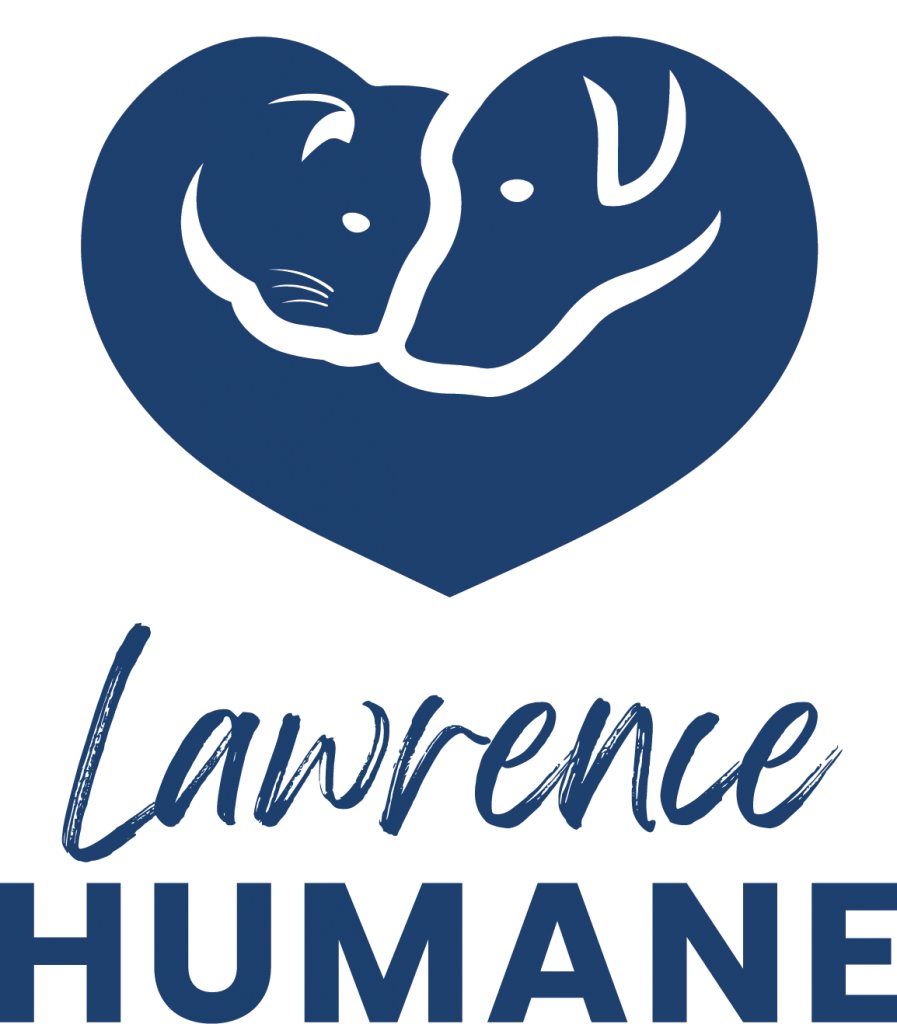1. When did you know a career in animal welfare was right for you?
I did not set out to work in animal welfare. I worked in the non-profit sector after college recruiting, training, and managing volunteers with Girl Scouts. Driving home from work one day, I rescued a miniature pinscher with two broken legs off the street in Kansas City. This dog, who I named Klaus, quickly became my companion and sparked my interest in animals. I began spending my free time engaged in dog-related activities, visiting the dog park, reading dog training books, and daydreaming about becoming a dog trainer.
In 2006, when the city of Independence, MO started discussing banning pit bull-type dogs, I began researching the issue and testifying in opposition to the proposed ban. My interest in animals was growing stronger, and I wanted it to be more than a hobby, so I embraced a career change and went to school to learn to train dogs in 2008. After school, I worked as a professional dog trainer for three years and even spent part of that time in Lawrence, seeing clients through Home Sweet Home Dog Resort and teaching some dog training classes at the LHS.
In late 2011, I got a call from a couple of people I met while advocating against breed bans. They had the notion to bid on the contract to run the city shelter for the City of Kansas City, Missouri. They wanted to save more lives in their community. Historically, the city only adopted out roughly 35% of the animals. And a previous contractor had only placed about 65% of animals. The organization known as KC Pet Project was thus created by engaged citizens who wanted to do more for Kansas City’s animals. I was excited by their vision and the belief that we could be the change in our community. I found myself saying, “I’m in!”
I never imagined I would work for an animal shelter; I didn’t even like setting foot inside them. But at the start of 2012, believing in the people and the cause, I began my career in animal sheltering. We were a start-up organization with a lofty goal and I quickly found myself taking on more responsibility because I had a willingness to work hard and a natural inclination to lead. I wanted to help influence the future of the organization and stepped into the operations role. The feeling that working in animal welfare was right for me was something that grew as I began to see how our hard work was making a real difference in the lives of animals and in the community.
2. What were the most important lessons you learned during your time at Kansas City Pet Project?
I learned a tremendous amount about animal sheltering and about leadership over the past 8 years at Kansas City Pet Project, all of which has made me better equipped to lead today. Though too numerous to list here, there are some big takeaways I can share that have influenced my perspective on animal sheltering.
- People are generally good and should be treated with compassion, whether they are adopting or surrendering. The best outcomes for animals usually come when we treat people with kindness.
- The community is our partner in life-saving; we need to let them know how they can help.
- Animal sheltering is physically and emotionally demanding and self-care is essential for employees and volunteers to be resilient, otherwise you will lose good people.
- Leadership must place an emphasis on taking care of employees so they have the bandwidth to take care of the animals.
- All staff and volunteers, regardless of position, should be encouraged to share ideas.
- Creativity leads to innovation and real problem-solving.
3. Do you have a general animal welfare philosophy you follow?
Animal sheltering is in a renaissance period. The way shelters are helping pets is vastly different now than it was even 10 years ago. I believe this is the result of an increase in research in the field and sharing of ideas among organizations. I think it’s important to stay current on available data and use it to inform our decisions about how to best serve animals in need in the community. As the field continues to evolve, so should we, as an organization, to maximize our ability to help pets and people.
For animals entering the care of the shelter, I believe we need to do more than just provide food, water, and shelter until they find a new home or get reunited with their family. We should also do our best to help the animals be physically and emotionally healthy during their stay. This means providing them with medical care, when needed, and enrichment and behavior programs to offset the negative impact of confinement.
Even with the best of care, the shelter is not an ideal place for animals to remain long term; we want them in loving, stable homes. Therefore, we should work to reduce the amount of time animals remain in the shelter. We do that by helping people find their lost pets quickly, effectively promoting animals for adoption, and utilizing rescue partners and foster homes to provide housing for injured or stressed animals until they find a permanent home. When we move animals to positive outcomes efficiently, we not only help the animals in care, we also increase our capacity to help more animals in the future.
In-shelter services are not the only way for animal shelters to help pets in their community. Outreach services reduce the number of animals that need to enter the shelter by providing solutions before the pet walks through the shelter doors. Outreach services include programs to help people care for community cats, and safety net services that provide resources to pet owners that wish to keep their pet but face obstacles in doing so. By connecting owners to resources such as food, low-cost spay and neuter, behavioral help, pet-friendly housing, and medical services, we can reduce the number of animals that need to enter the shelter. I’d rather not find a pet a new home if it already has a loving owner who simply needs a hand. Outreach services are sometimes the best way we can help a pet, especially if the animal is unlikely to feel safe in the shelter. And, of course, it helps preserve the bond between the owner and the pet.
Determining whether an animal is best helped through in-shelter or outreach services requires us to view each animal individually and weigh needs against available resources. Having diverse programs provides multiple pathways to help more animals achieve a positive outcome.
4. You mentioned advocating against breed restrictions. Can you tell us more about your advocacy?
In 2006, I learned that the city I lived in at the time, Independence, MO, was considering enacting a breed ban in response to an incident where a resident was severely attacked by three dogs that were believed to be pit bulls. Though I did not own a pit bull, the targeted breed to be banned, I was struck by the futility in prohibiting certain dogs based on breed, rather than taking a widespread approach to public safety that focused resources on dogs of any type that behaved in an unsafe manner. Having grown up in a politically active family, I felt compelled to participate in the discussion as an engaged citizen. Doing research on the issue, I stumbled upon a group of like-minded individuals in the community that also wanted to speak out on the issue. Most of them owned pit bulls and understood the threat a breed ban would be to the beloved dogs they considered family. I joined forces with this group of people and together we testified at public safety and council meetings using research, rather than emotion, to advocate against a breed ban. All the leading experts in animal behavior, animal health, and animal welfare oppose restrictions based on breed. Soon, several surrounding communities contemplated bans and we worked to combat them each. Sometimes we lost, like in Independence where the issue was so emotionally charged, but most of the time we managed to convince policy makers with our level-headed, fact-based approach. We also saw pet owners in other states were tackling the issue too, and because we’d learned so much, we decided to host a conference to help others in the region advocate against bans in their own communities.
Since then, I continue to advocate against laws that restrict or prohibit pet ownership based on breed. I have testified on behalf of KC Pet Project and as a professional dog trainer at the Missouri State Capitol in support of proposed legislation that would prevent states from enacting breed discriminatory laws. More and more communities that once had bans are reversing them because they have proven ineffective and a misallocation of resources. Fortunately, Lawrence has a model ordinance that addresses unsafe dogs based on behavior, rather than appearance.
5. Can you describe launching KC Pet Project’s canine parvovirus treatment program?
In December of 2012, at the end of our first year operating the Kansas City shelter, KC Pet Project had a new veterinarian working at the shelter when 2 sick puppies arrived. Winnie, and her brother Sebastian, tested positive for parvovirus. Parvovirus, or parvo, is a virus that affects unvaccinated or under-vaccinated dogs, mostly puppies, and causes persistent vomiting and diarrhea. Untreated, the virus usually results in death from dehydration or sepsis. Previously, all parvo-positive dogs were euthanized at KC Pet Project due to the highly contagious nature of the illness, the fear of exposing other animals in our population, and a lack of obvious space to responsibly house them. I knew that meant these two pups would be euthanized, except, I thought to myself, what if it didn’t have to be that way? I looked at the vet and said, “What if we didn’t euthanize them?” To my surprise, the doctor agreed to help me try to save them. I cleared out the tiny locker room I had been using for my office and made it Winnie and Sebastian’s quarantine housing. There, I cared for the 2 puppies according to the vet’s orders, giving them fluids, antibiotics, and anti-vomiting medication to support their little bodies as the virus ran its course.
What happened to Winnie and Sebastian? They lived! They got adopted…together. And I knew then that there was no going back. If we could save these two, how could we justify not doing it again? So we did it again, and again, for the last 7 years, treating nearly 700 dogs and saving over 80% of them from the deadly virus. We went on to treat cats with panleukopenia too. Panleuk is a virus that affects unvaccinated cats similar to how parvo presents in dogs. Treatment is quite similar too.
Over the years, the program has grown to assist other rescue groups in the area. We also launched a volunteer training program to teach volunteers to assist with basic care, treatments, and enrichment for dogs during their quarantine period. Recently we’ve been able to help teach other shelters how to launch a treatment program with limited resources. More and more shelters are treating parvo and panleuk. With treatment, parvo patients have an 80% or better chance of recovery. Those are pretty great odds!
6. What do you think the Lawrence Humane Society currently excels at?
The Lawrence Humane Society is mission-focused. The shelter is saving the lives of thousands of animals annually. The organization continues to expand its impact in the community by not only caring for homeless animals, but also offering services to local pet owners and community cat caretakers. Programs like the low-cost spay and neuter service, the community cat program, and Project HELP reflect the community-minded mission of the organization.
7. What other assets do you believe the Lawrence Humane Society has going for the shelter?
The biggest asset the shelter has is steadfast, hardworking staff with a genuine concern for the welfare of animals and a desire to help as many animals as possible. They are both the heart and the backbone of the organization. In particular, I appreciate the creativity they have shown when advocating for animals that are stressed at the shelter and don’t show adopters their true potential in the shelter setting. Their creative solutions are saving lives!
The new facility is an obvious asset. It provides the animals with modern housing that is designed to better preserve the physical and emotional health of the animals while they are at the shelter. It is allowing us to take better care of them during their stay.
The Lawrence community itself is also an asset. They are generous supporters for local animals in need. Animal shelters are most effective when they are backed by an animal-loving community, like Lawrence, in partnership to make a positive impact on the lives of pets and people.
8. In what areas do you believe the Lawrence Humane Society can grow?
Anytime a shelter moves into a new facility, there are adjustments that must be made. A new facility creates operational opportunities and allows for, or sometimes necessitates, changes in process. The new LHS facility has less kennels than in the previous building. This means that it’s imperative that the shelter operate efficiently so that we can maximize the number of animals we can help. Historically, the shelter has been able to help not only local animals, but also at-risk animals from shelters in other communities as well. We’ll be working to increase efficiency of existing processes and expand programs so we can get back to helping the most animals possible in the new facility.
9. Do you have any programs or policies you hope to implement early in your tenure as Executive Director of the Lawrence Humane Society?
My early focus will be to work with the team to employ sustainable programs that ensure the physical and emotional health of the animals in our care while moving them on to homes efficiently. Happy, healthy pets move to good homes quickly. The organization is already doing great things. I’ll be looking for how we can fine tune and/or expand the good work being done.
Before I implement any changes or roll out and new programs or policies, I’ll first need to spend time working alongside staff to learn about the state of operations from their perspective. They have valuable insight into the history of the organization, what’s working well, and where there’s opportunity for growth. With their insights, coupled with my own observations and experiences, we’ll be able to make informed plans for the short and long term future together.


